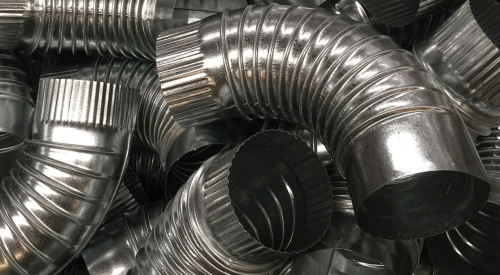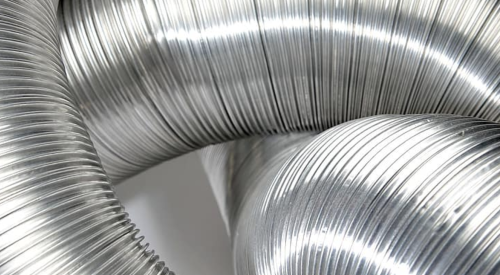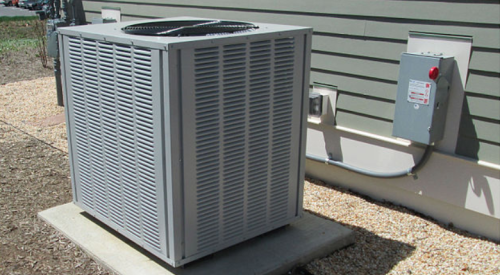Home builders despise two things: punch lists and callbacks.
"Callbacks pertaining to the comfort of a home are common in our industry," says Ross Benline, a customer service manager with Ryland Homes Austin/San Antonio division.
Yet when it comes to one of the most common causes of aggravation — heating, ventilation and air conditioning (HVAC) installation — many builders leave their fate in the hands of a subcontractor.
Not Ryland Homes.
In 2000, Ryland's Austin/San Antonio division recognized the correlation between HVAC performance and customer satisfaction, and began working with a contractor services company to develop a plan to ensure the comfort of its homes.
The result is Ryland's "HouseWorks" program, which focuses on all the components that affect a home's heating and cooling system. By working with HVAC contractors earlier in the construction process and demanding they meet certain criteria, Ryland builders now get fewer callbacks. The company also has a new marketing tool: comfort and HVAC efficiency guarantees for homebuyers.
"Since 1999, our comfort complaints directly related to air balancing and cooling have reduced by more than 50 percent," Benline says. "Furthermore, the complaints we do have are costing far less to address and resolve to our customers' satisfaction."
While not every builder may see a reduction as dramatic as Ryland, some simple guidelines to HVAC installation can help reduce callbacks and make them less expensive.
Setting New StandardsThrough its Tech Set approach, the Partnership for Advancing Technology in Housing (PATH) is helping builders limit callbacks by promoting affordable, durable and energy efficient HVAC systems that maximize occupant comfort and indoor air quality. PATH's "HVAC Package for New Construction — Forced Air System," recommends 11 standard measures builders can use when designing, specifying, and installing an HVAC system. Knowing the steps you need to take to condition the space properly will also help you work more effectively with your HVAC contractor.
PATH recommends the following steps (as illustrated on page 61):
- Design ducts to ensure proper air distribution with the recognized industry standards published by the Air Conditioning Contractors Association's (ACCA) Manual D, rather than often inaccurate and inefficient rules of thumb. Properly sized ducts can reduce initial costs and operating costs. Installing the ducts into conditioned space provides even greater efficiency and cost savings.
- Properly size and select the HVAC system with ACCA's Manual J and S — the industry standard for residential load calculation required by most building codes around the country — to ensure the system achieves maximum efficiency through properly sized equipment.
- Locate the outside condensing unit to ensure that exterior walls or other features do not block airflow. Additionally, the unit should be kept out of direct sunlight.
- Reserve space for ducts in the home design. Dedicate chases within the floor plan for efficient, conditioned air supply, rather than installing ducts around the structural frame. Include air returns for each room (except bathrooms) or install transfer grilles to promote good airflow.
- Install trim-able open web trusses or floor structural components that leave room for duct installation within the floor assembly. This allows you to run ductwork and other utilities without cutting structural members.
- Specify efficient equipment that meets or exceeds ENERGY STAR qualifications.
- Provide controlled mechanical ventilation using energy-efficient methods. These can range from adding a simple and inexpensive exhaust-only fan to installing more expensive and efficient heat recovery ventilation equipment, which transfers a significant amount of energy from the exhaust air to the supply air.
- Install an ENERGY STAR qualified programmable thermostat.
- Seal all ducts including plenum junctions with foil tape that meets UL 181 or apply mastic, the only sealant approved by the ACCA.
- Mask HVAC outlets during construction and vacuum ducts, boots, and grilles before turning on the central system.
- Install a filter rated for the home's needs.
A properly trained and licensed HVAC contractor should be able to handle all of these tasks without any additional tools or training.
Some of the most important recommendations have no cost at all. Ensuring the ducts are designed and sized correctly, for example, only requires a little forethought.
In many markets, there will be an additional expense for sealing the ductwork and installing trim-able open web trusses, but there are also significant benefits for the builder and the homeowner in efficiency, greater equipment accessibility, and speedier construction.
That is exactly what Ryland Homes discovered after the creation of its comfort program.
"Although changing our processes was not an easy task to undertake, the benefits to our division, customers, and society far outweigh the difficulties and the initial cost," Benline says.
A Little Time Now or a Lot of Money LaterIf, like many builders, you think you don't have the time to be more involved and you're happy to let your HVAC contractor do the work, think again, says Chuck Miller, president of Chuck Miller Construction, Inc. in Hidden Springs, Idaho.
"The safest approach for the builder is to work with the HVAC contractor to pre-plan the system," Miller says.
Ryland has discovered that the time required to implement many of its comfort strategies, such as using Manual J calculations to ensure "right-sized" HVAC equipment, is much less than the time a builder must spend responding to punch lists or callbacks.
"On the front-end, we now work more closely with our subcontractors to meet certain criteria: pass performance testing, duct-blaster testing, and have the proper sealing, design, and number of returns," Benline says.
"Even with the technology and supervision used to design and construct the homes, we still do have some callbacks with respect to comfort. However, they are easily remedied with air balancing. The equipment is now right sized and the building envelope is tight, so we just need to make sure they are directing the airflow into the right places."
The Right ContractorThe biggest problem for Miller is locating a contractor willing to go the extra mile for an energy-efficient system.
"But this is a function of the market. If enough builders ask, the HVAC contractors will implement the practices," Miller says.
In the meantime, where do you begin?
Start by finding the right contractor. Asking these three questions will help you determine whether the person is really qualified:
- What are your sealing methods?
- What software or calculations do you use to size your HVAC system?
- In which previous projects have you used this software or calculations?
"Builders should make sure their contractors know Manual D and J, and then verify that they are using it," says Glenn Hourahan, ACCA's vice president for research and technology.
"A lot of times a contractor will say they know it — and they should know it because they are required to meet code — but when you ask them how they are doing it, you can discover that they don't even have the correct tools."
ACCA recommends builders use an HVAC contractor who complies with state and local codes and regulations, carries insurance, and is up-to-date on the latest developments in equipment, technology, and design procedures.
Of course, a contractor also should guarantee the project's HVAC work.
Once you've found a qualified contractor, involve the firm from the beginning of the design process, rather than waiting until the Manual J calculations are needed for mechanical permit submission.
If you work with the contractor early on, ducts can be located more efficiently and effectively in the home's floor plan, which maximizes the home's energy performance. By keeping a contractor in the loop, you can also ensure timely installation within the construction schedule.
Using these recommendations as a guide, you can feel confident that the HVAC system will keep the homeowners comfortable — and you'll minimize those dreaded, costly callbacks.











